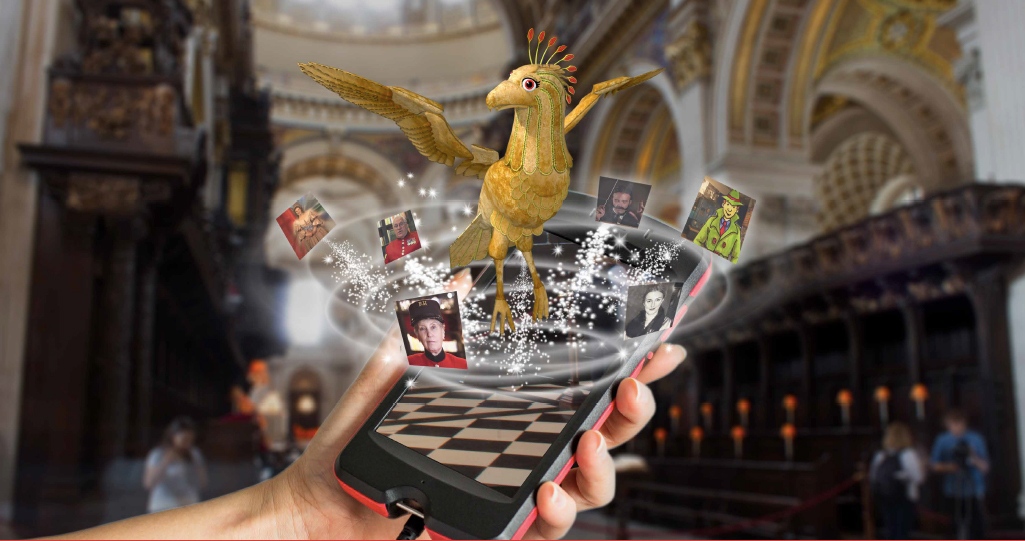
5th June 2023
Are you ready to go digital?
Digital interpretation comes in a bewildering array of forms. It also has a confusing number of names; multimedia, interactive or even mobile interpretation.
Put simply, digital interpretation allows museums, heritage sites and visitor attractions to embrace new technologies and innovative approaches to engage with their visitors. It can create unique and memorable experiences and help attract a wider audience, including younger generations who are increasingly more accustomed to digital interactions.
With the right content, digital interpretation can open up possibilities for immersive storytelling, interactive touchscreens, 3D content, virtual reality (VR) and augmented reality (AR) experiences, and interactive games, perfect for keeping the children engaged!
Here at ATS we have a strong track record of using digital to help interpret heritage sites, galleries and museums, taking the compelling storytelling, and not the technology, as our starting point.
However, and this is important, we understand that digital content is there to enhance, not replace, your existing experience!
Regardless of size, history or location, many of our clients face similar challenges:
- How to reveal the stories of the people who made, owned the collections or who occupied the heritage site?
- How to make these stories feel relevant and accessible to every visitor, especially those from other countries and cultures?
- How to balance the desire to increase the visitors’ ability to interact whilst still protecting the fabric, collections and special atmosphere of the site?
- How to engage and inspire the visitors when there is so much competition for their time?
Anne Fletcher, ATS’s Director of Interpretation, discusses how our digital interpretation services are uniquely placed to meet these challenges:
Revealing the Stories
Digital interpretation offers interactive and immersive experiences that can enhance the overall visitor engagement. It allows visitors to interact with exhibits in new and interesting ways, providing them with additional information.
However, much of the daily life of a collection or heritage site is not visible to visitors, taking place behind closed doors or outside of opening hours. Digital content can not only reveal, but really bring to life these hidden stories using videos of conservation at work, on-screen glimpses of behind the scenes restorations, 3D scans of objects opening and turning, and interviews with the people who work there.
Making the Stories Relevant and Accessible
Digital content can be structured to meet the needs of a broader audience, giving them tailored access to the stories. We have developed tours for adults and families in a range of languages, all of which are accessible on one handset. For hearing or sight impaired visitors, the multimedia guide provides an essential vehicle to deliver sign language translations in the form of high-definition videos and specially written audio described tours.
For those who can’t physically visit the museum due to geographical constraints, physical disabilities or other limitations, our online digital solutions enable people from different parts of the world to engage with collections, exhibits, and educational content remotely.
Families are also an important heritage audience and yet are often difficult to attract. They look for fun, active and sometimes learning based things to do together, particularly during school holidays. We have developed a range of very successful family tours. These use the full range of multimedia to offer children and their parents opportunities to engage with characters from history, take part in spotting competitions and play games on screen. In fact, we’ve written a whole article about designing family friendly experiences – take a look!
Interaction vs Preservation
Digital interpretation extends the learning opportunities beyond the physical boundaries of the museum. It allows venues to provide in-depth information, educational resources, and interactive experiences that can enhance the information presented in the physical exhibits. Visitors can access these resources before, during, and after their visit, deepening their understanding and knowledge of the subject matter.
It also plays a crucial role in preserving and conserving fragile or sensitive artifacts and artworks. By creating high-quality 3D digital replicas, museums can showcase these items without exposing them to potential damage from excessive handling, exposure to light, or other risks. Digital platforms also enable museums to archive and document their collections, ensuring their long-term preservation and making them accessible for future generations. We have a new 3D Photogrammetry partnership – find out more here.
Engaging & Inspiring
Today’s audiences expect digital engagement opportunities in most aspects of their lives, including cultural experiences. By incorporating digital interpretation, venues can adapt to these expectations and stay relevant in the rapidly evolving digital landscape. It helps museums connect with tech-savvy visitors and caters to their preferences for interactive and personalised experiences where they feel like they’re in control.
We specialise in creating content where the main narrative can be supported by themed layers, offering a range of stories that branch off so that visitors can follow them if they wish. This layered approach of providing information means that the visitor feels in control of what they look at and where they go, all at a pace that suits them.
Giving visitors the confidence to explore and discover a space is also essential to a good experience. Multimedia guides can lead people around complicated spaces and give them glimpses of things that they might otherwise miss.
Having considered all of the above, you may have concerns that going digital might replace your volunteer or staff-led tours and talks. We have found the opposite! In many cases, visitor dwell time has increased because they feel more connected and this has led to more questions being directed at staff and volunteers.
Overall, digital interpretation in cultural and heritage sites can broaden the reach, enhance accessibility, elevate visitor engagement, improve learning opportunities and embrace innovation – and it all starts with a quick call with the ATS team!
If we have sparked some interest regarding the use of digital interpretation in your venue, we would love to speak with you.
Give us a call on 02392 595000 or email enquiries@ats-heritage.co.uk

